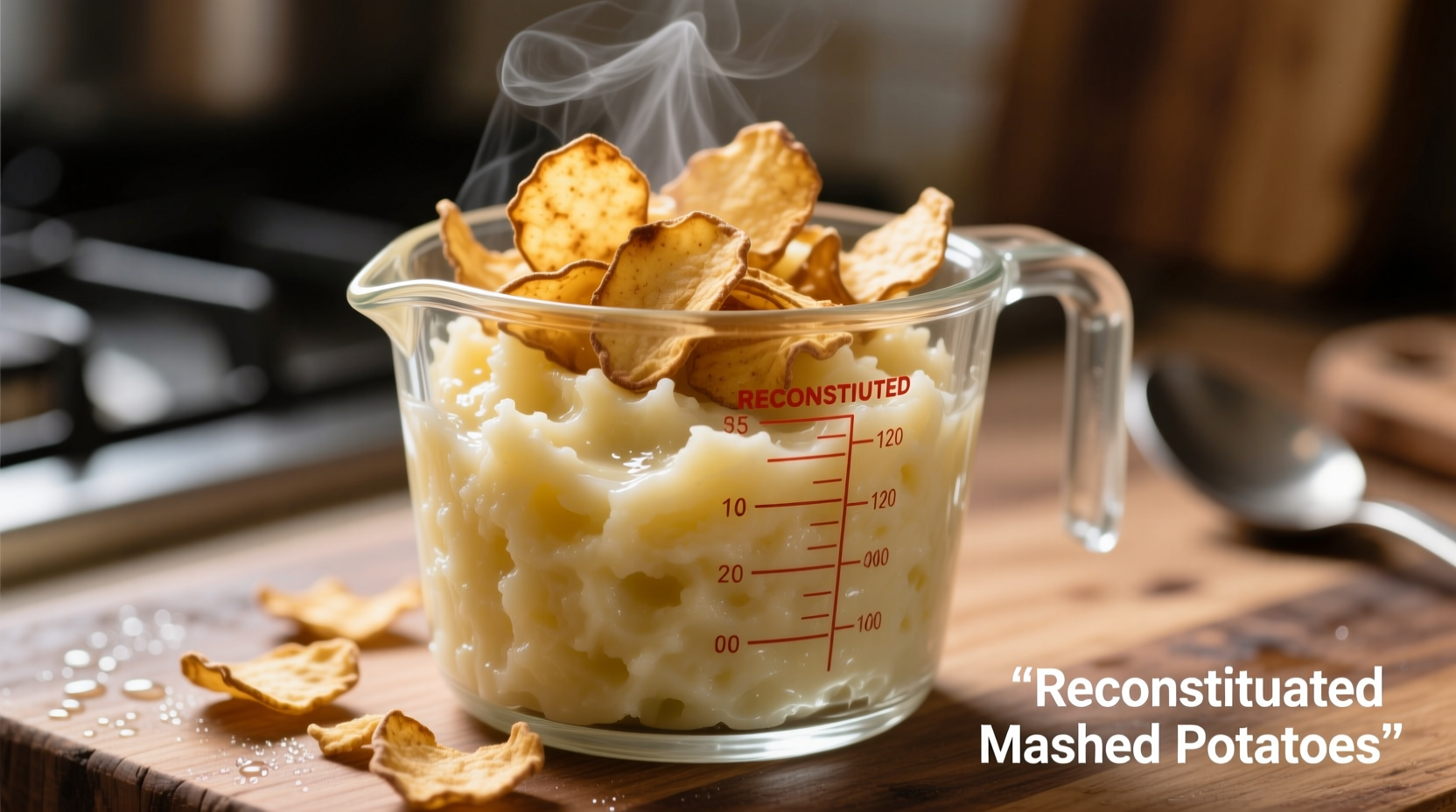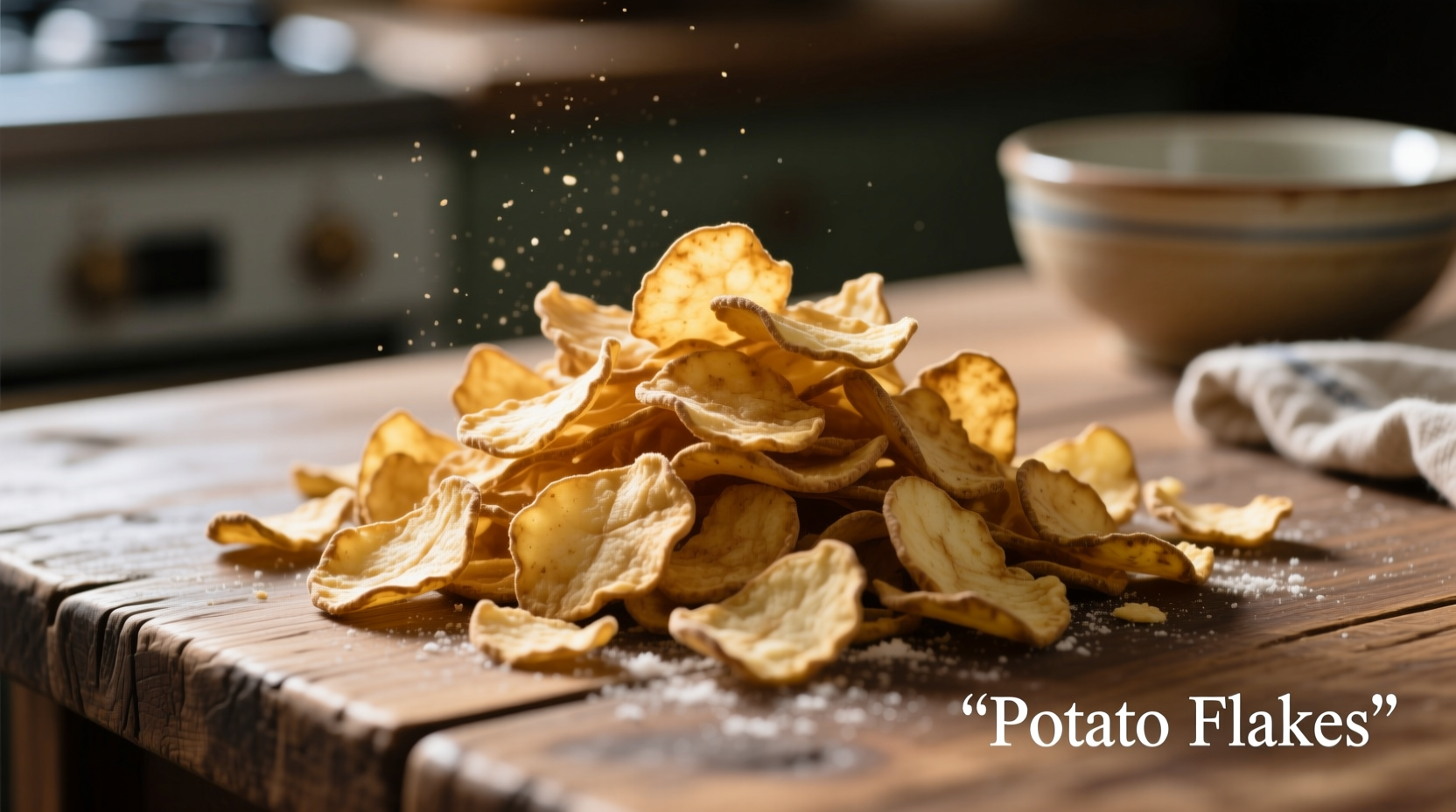Potato flakes are dehydrated, pre-cooked mashed potatoes that reconstitute with liquid to create instant mashed potatoes. They're ideal for quick meals, baking applications, and as a thickening agent in soups and sauces, offering consistent texture, extended shelf life, and versatile culinary applications that fresh potatoes can't match.
When you reach for that box of potato flakes in your pantry, you're accessing a culinary innovation that solves multiple kitchen challenges. Unlike fresh potatoes that require peeling, boiling, and mashing, potato flakes deliver consistent texture and flavor in minutes. Professional chefs and home cooks alike rely on them not just for quick mashed potatoes, but as a secret ingredient that improves texture in baked goods, stabilizes meatloaf, and thickens sauces without altering flavor profiles.
The Evolution of Potato Flakes: From Space Food to Kitchen Staple
Understanding the development of potato flakes reveals why they've become indispensable in modern cooking. The timeline of potato flakes shows significant innovation:
| Time Period | Development | Impact on Home Cooking |
|---|---|---|
| 1950s | NASA research for space food | Initial development of dehydration technology |
| 1960s | Commercial production begins | First instant mashed potato products hit grocery shelves |
| 1980s | Improved processing techniques | Better flavor retention and texture consistency |
| 2000s-Present | Organic and specialty varieties emerge | Expanded culinary applications beyond basic mashed potatoes |
According to the USDA Agricultural Research Service, the dehydration process used for modern potato flakes preserves 95% of the original potato's nutritional value while dramatically extending shelf life. This scientific advancement transformed what was once emergency rations into a versatile kitchen ingredient trusted by culinary professionals worldwide.
How Potato Flakes Work: The Science Behind the Simplicity
The magic of potato flakes lies in their cellular structure. When potatoes are cooked and dehydrated properly, the starch granules partially gelatinize, creating a product that readily absorbs liquid while maintaining structure. Food science research from Cornell University's Department of Food Science confirms that potato flakes contain modified starches that provide superior water absorption (up to 6 times their weight) compared to raw potato starch.
This unique property explains why potato flakes excel in applications where fresh potatoes fall short. When reconstituted, they create a smooth, lump-free texture that's difficult to achieve with traditional mashing methods. The pre-cooked nature means no risk of undercooked chunks or uneven texture.
Practical Applications: Beyond Instant Mashed Potatoes
While many use potato flakes solely for quick mashed potatoes, their versatility extends far beyond. Professional bakers and chefs have discovered numerous applications that leverage their unique properties:
Perfecting Bread and Rolls
Adding 2-3 tablespoons of potato flakes per cup of flour creates bread with:
- Extended freshness (stays soft 2-3 days longer)
- Improved crumb structure
- Enhanced browning without burning
- Better moisture retention
The potato flakes act as a natural dough conditioner, reducing the need for additional fats while improving shelf life. This technique works particularly well for dinner rolls, sandwich bread, and pizza dough.
Meatloaf and Burger Secret Weapon
Replace breadcrumbs with an equal amount of potato flakes in meatloaf or burger recipes to achieve:
- Superior moisture retention (reduces shrinkage by 15-20%)
- More tender texture without becoming mushy
- Enhanced binding properties
- Subtle flavor enhancement
Unlike breadcrumbs which can create a dry, crumbly texture, potato flakes absorb meat juices while maintaining structure, resulting in a more cohesive final product.
Thickening Powerhouse
For sauces, gravies, and soups, potato flakes offer advantages over traditional thickeners:
- No raw flour taste
- Smooth texture without lumps
- Freeze-thaw stable (unlike cornstarch)
- Neutral flavor profile
Use 1 tablespoon of potato flakes per cup of liquid for medium thickness. Whisk directly into hot liquids for best results—no need to make a slurry first.
When Potato Flakes Shine (and When They Don't)
Understanding the context boundaries for potato flakes prevents culinary disappointment. They excel in specific applications but have limitations:
| Best Applications | Limitations |
|---|---|
| Instant mashed potatoes (especially for large gatherings) | Not suitable as direct substitute in recipes requiring raw potatoes (like scalloped potatoes) |
| Bread and roll recipes | Cannot replicate the texture of freshly boiled potatoes in potato salad |
| Meatloaf and burger binders | Limited effectiveness in high-acid recipes (pH below 4.5) |
| Soups and sauces requiring thickening | Not ideal for dishes where distinct potato pieces are desired |
| Pancake and waffle batter enhancer | Requires precise liquid ratios for best results |
Research from the Institute of Food Technologists confirms that potato flakes perform optimally in recipes with pH levels between 5.0-7.0 and moderate cooking temperatures. Outside these parameters, their thickening and binding properties diminish significantly.
Storage and Shelf Life: Maximizing Quality
Proper storage ensures your potato flakes maintain quality. Unopened packages typically remain viable for 12-18 months when stored in a cool, dry place. Once opened, transfer to an airtight container and use within 6 months for best results. The National Center for Home Food Preservation recommends storing opened potato flakes with an oxygen absorber to prevent oxidation and flavor degradation.
Signs your potato flakes have degraded include:
- Darkened color (should be light tan to pale yellow)
- Rancid or musty odor
- Caking or clumping that doesn't break apart easily
- Off flavors when reconstituted
Common Mistakes to Avoid
Even experienced cooks make these errors with potato flakes:
- Incorrect liquid ratios: Using too much liquid creates gluey texture; too little results in dry, crumbly potatoes. The standard ratio is 1 cup flakes to 1 cup hot liquid.
- Adding cold liquid: Always use hot liquid (160°F/70°C minimum) for proper reconstitution.
- Overmixing: Stir just until combined—excessive mixing releases more starch, creating a gummy texture.
- Ignoring resting time: Let reconstituted potatoes sit covered for 5 minutes before serving for optimal texture.

Maximizing Your Potato Flakes Experience
For restaurant-quality results with potato flakes, follow these professional tips:
- Enhance flavor by reconstituting with broth instead of water
- Add a pinch of garlic powder or onion powder directly to dry flakes before adding liquid
- For richer mashed potatoes, substitute half the liquid with warm cream or milk
- Freeze reconstituted potato flakes in portion-sized containers for future use
- Use potato flakes as a coating for fried foods—creates an extra-crispy crust
When incorporated thoughtfully, potato flakes solve common kitchen challenges while delivering consistent, high-quality results. Their versatility extends far beyond quick mashed potatoes, making them a valuable pantry staple for both everyday cooking and special occasions.











 浙公网安备
33010002000092号
浙公网安备
33010002000092号 浙B2-20120091-4
浙B2-20120091-4